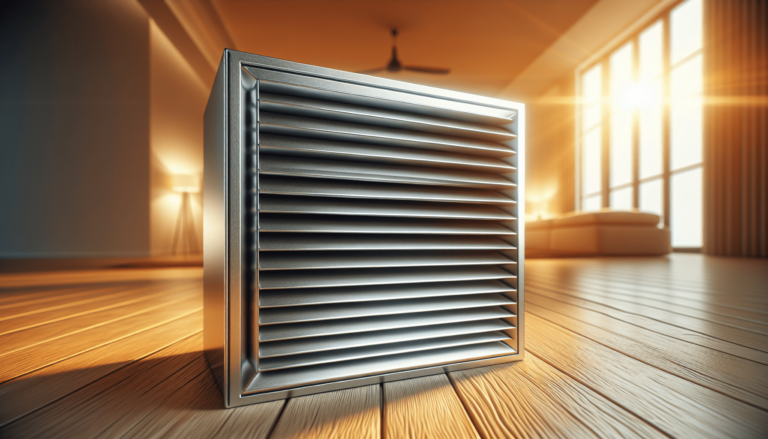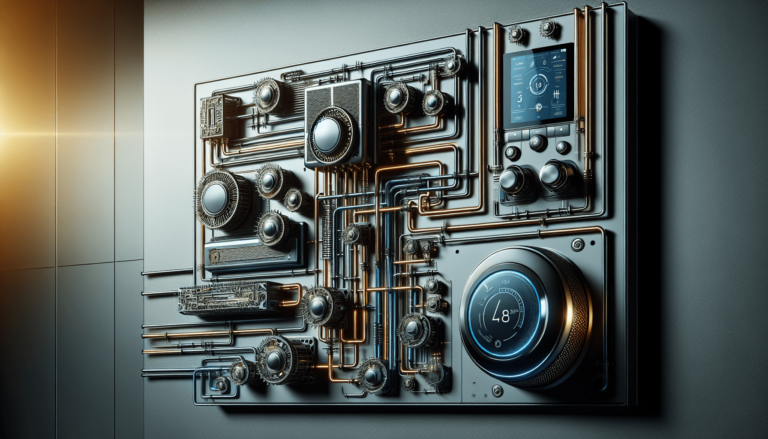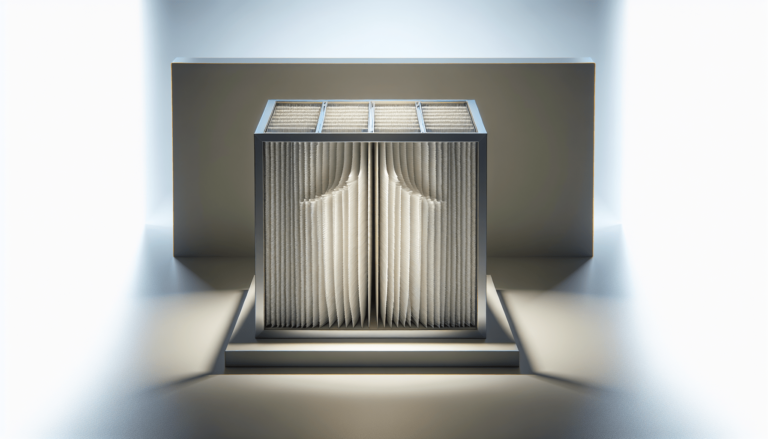

HVAC Services
Get Professional Repairs From The Area's Trusted HVAC Technicians. Ask About Our Services! We Offer Professional Heating & Cooling System Repairs And Guarantee Long-Lasting Results.
Got Question? Call us: (850) 678-2665Financing
Best HVAC Solutions for Different Climates
Discover the best HVAC solutions for different climates. From hot and humid to cold and dry, find the perfect heating, ventilation, and air conditioning systems for optimal comfort and efficiency. Trust Tempacure Heating and Air Conditioning in Niceville, FL to meet all your HVAC needs.
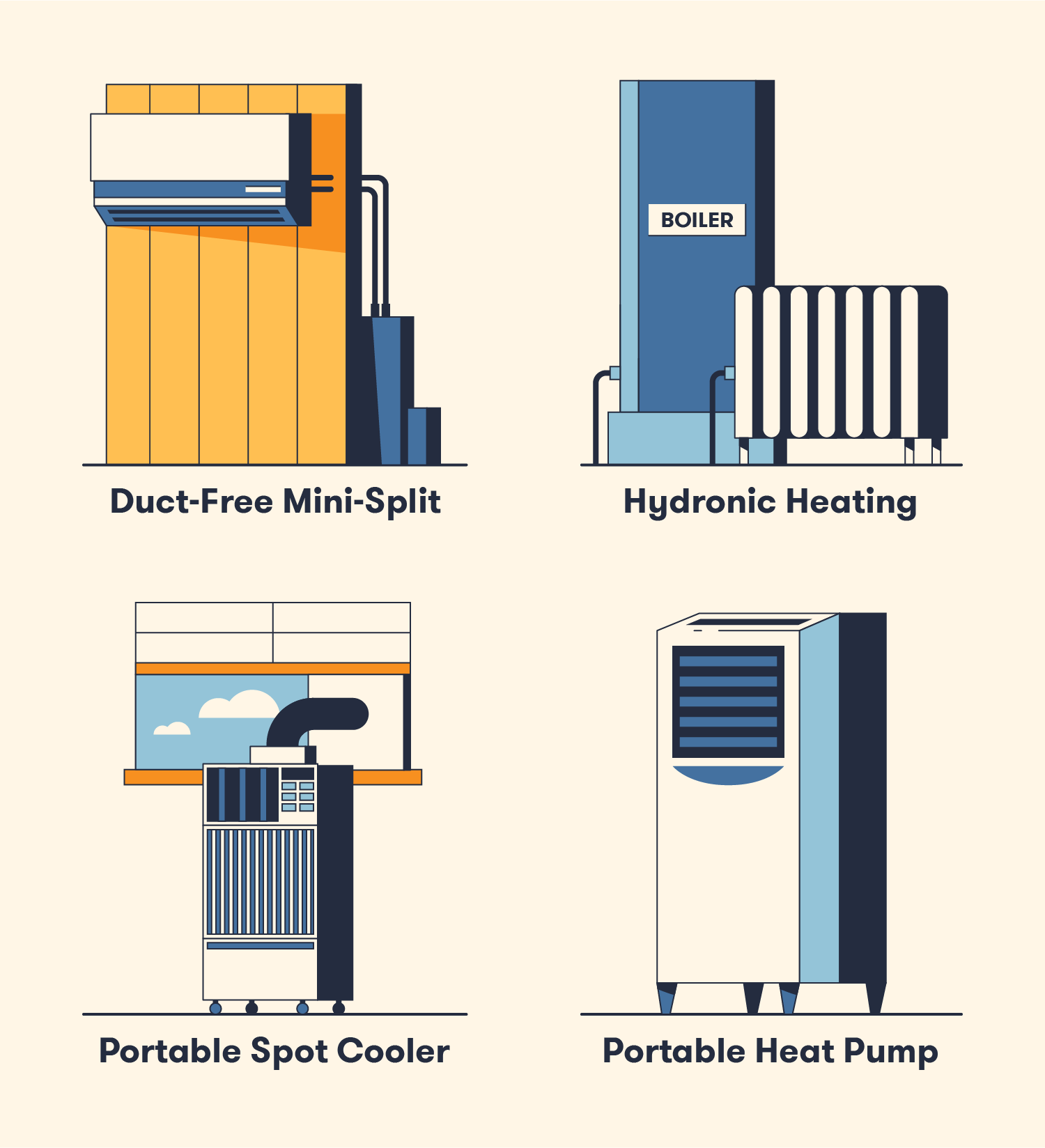
When it comes to finding the best HVAC solutions for different climates, there are a few important considerations to keep in mind. From scorching hot summers to frigid winters, each climate requires specific heating, ventilation, and air conditioning systems to ensure optimal comfort and efficiency. In this article, we will explore the various factors that need to be taken into account when selecting an HVAC system for different climates, and how Tempacure Heating and Air Conditioning can be your go-to provider for all your HVAC service, repair, and maintenance needs in Niceville, FL and the surrounding area. With their expertise and top-notch services, Tempacure HVAC is truly a leader in the field.
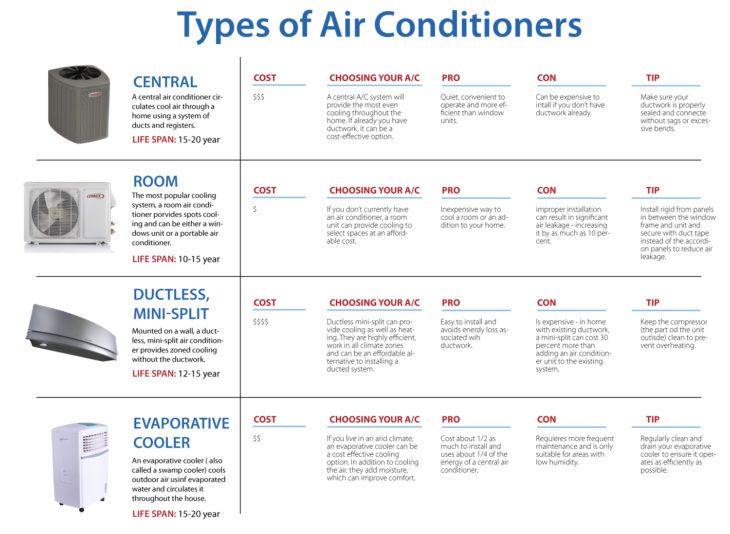
This image is property of wecareteam.com.
Hot and Humid Climates
High-Efficiency Air Conditioning Systems
In hot and humid climates, a high-efficiency air conditioning system is essential to keep your home cool and comfortable. These systems are designed to provide efficient cooling while reducing energy consumption, saving you money on your electricity bills. High-efficiency air conditioners have a higher Seasonal Energy Efficiency Ratio (SEER) rating, which indicates their energy efficiency. They are specifically designed to handle the high cooling requirements of hot and humid climates, keeping your home at a comfortable temperature even during the hottest days.
Dehumidifiers
In hot and humid climates, excess humidity can make your home feel uncomfortable and promote the growth of mold and mildew. Dehumidifiers are the perfect solution to remove excess moisture from the air, making your home feel cooler and more comfortable. These units work by drawing in moist air, removing the moisture, and circulating dry air back into your living space. Dehumidifiers not only improve the comfort of your home but also contribute to better indoor air quality by reducing the risk of mold and allergen growth.
Effective Insulation
Proper insulation is crucial in hot and humid climates to keep cool air inside and prevent warm air from entering your home. Effective insulation helps your air conditioning system work more efficiently and reduces the load on the system, resulting in lower energy consumption. By preventing the transfer of heat through walls, floors, and ceilings, insulation helps maintain a consistent temperature in your home and keeps you comfortable even during the hottest months.
Proper Ventilation
Proper ventilation is essential in hot and humid climates to circulate air and eliminate stale and humid air from your home. It allows fresh air to enter your living space, improving indoor air quality and preventing the buildup of odors and pollutants. In addition, proper ventilation helps remove excess heat and moisture from your home, reducing the load on your air conditioning system and promoting energy efficiency.
Cold and Dry Climates
Energy-Efficient Furnaces
In cold and dry climates, energy-efficient furnaces are a necessity to keep your home warm and cozy. These furnaces are designed to provide efficient heating while minimizing energy consumption. Look for furnaces with a high Annual Fuel Utilization Efficiency (AFUE) rating, which indicates how efficiently the furnace converts fuel into heat. Energy-efficient furnaces not only provide consistent and reliable heating but also help lower your energy bills by reducing fuel consumption.
Heat Pumps
Heat pumps are an excellent heating option for cold and dry climates. Unlike furnaces that generate heat, heat pumps extract heat from the outside air, even in cold temperatures, and transfer it inside your home to provide warmth. Heat pumps are energy-efficient, as they require less energy to move heat compared to generating heat. They can also be used for cooling during warmer months, providing year-round comfort. Look for heat pumps with a high Energy Efficiency Ratio (EER) rating to ensure optimal energy efficiency.
Humidifiers
Cold and dry climates can cause low humidity levels in your home, resulting in dry and uncomfortable conditions. Humidifiers add moisture to the air, increasing humidity levels and improving indoor comfort. They can alleviate dry skin, throat irritation, and respiratory issues caused by low humidity. Humidifiers come in various types, such as portable units and whole-house systems, allowing you to choose the option that best suits your needs and budget.
Adequate Insulation
Just as insulation is essential for hot and humid climates, it is equally important in cold and dry climates. Adequate insulation helps prevent heat loss through walls, floors, and ceilings, keeping your home warm and reducing the workload on your heating system. Proper insulation ensures that the warm air generated by your heating system stays inside your home, providing comfort and energy efficiency.
Mild and Moist Climates
Heat Pump Systems
In mild and moist climates, heat pump systems are an ideal choice for both heating and cooling. Heat pumps extract heat from the air or ground and transfer it indoors to warm your home during cooler weather. In warmer months, they reverse the process and remove heat from your home, providing efficient and effective cooling. Heat pump systems are highly energy-efficient, as they move heat instead of generating it.
Hybrid HVAC Systems
Hybrid HVAC systems combine the advantages of heat pumps and traditional furnace systems. These systems automatically switch between using the heat pump or the furnace, depending on the outdoor temperature. Hybrid HVAC systems are optimized for mild and moist climates, providing efficient heating and cooling throughout the year. They offer flexibility and energy savings by utilizing the most appropriate heating or cooling method based on the outdoor conditions.
Programmable Thermostats
Mild and moist climates can experience temperature fluctuations throughout the day. Programmable thermostats allow you to set different temperatures for different times of the day, ensuring optimal comfort and energy efficiency. You can program your thermostat to reduce energy consumption when you’re away from home or asleep and have it adjust to your desired comfort levels before you return. This not only saves energy but also helps maintain a comfortable indoor climate.
Proper Air Filtration
In mild and moist climates, air filtration is crucial to maintain good indoor air quality. Effective air filters capture and remove dust, pollen, mold spores, and other airborne particles, improving the overall air quality in your home. This is especially important for those with allergies or respiratory conditions. Choose HVAC systems with high-efficiency particulate air (HEPA) filters to ensure clean and healthy air circulation.
Extreme Climates
Geothermal Heating and Cooling
In extreme climates, geothermal heating and cooling systems provide reliable and efficient year-round comfort. These systems use the stable temperature of the earth to heat and cool your home, regardless of the external weather conditions. By harnessing the heat stored beneath the ground during winter and transferring heat underground during summer, geothermal systems are highly energy-efficient and environmentally friendly.
Ductless Mini-Split Systems
Ductless mini-split systems are a popular choice for extreme climates due to their flexibility and efficiency. These systems consist of an outdoor unit connected to one or more indoor units, allowing you to control the temperature in individual rooms or zones. Ductless mini-split systems are highly efficient, as they eliminate the energy loss associated with ductwork. They can operate in extreme temperatures and are suitable for both heating and cooling, providing targeted comfort when and where you need it.
High-Efficiency Insulation
Extreme climates require high-efficiency insulation to minimize heat transfer and maintain a comfortable indoor temperature. Consider insulation materials with high R-values, indicating their resistance to heat flow. High-efficiency insulation helps reduce your heating and cooling costs by preventing thermal losses and gains, ensuring that your HVAC system operates efficiently regardless of the external climate conditions.
Zoned Heating and Cooling
Zoned heating and cooling systems allow you to divide your home into different zones or areas and control the temperature independently. This is particularly useful in extreme climates, where you may have varying temperature needs throughout your home. Zoned systems use dampers or individual units to regulate airflow and adjust temperature settings in each zone, improving energy efficiency and providing personalized comfort.
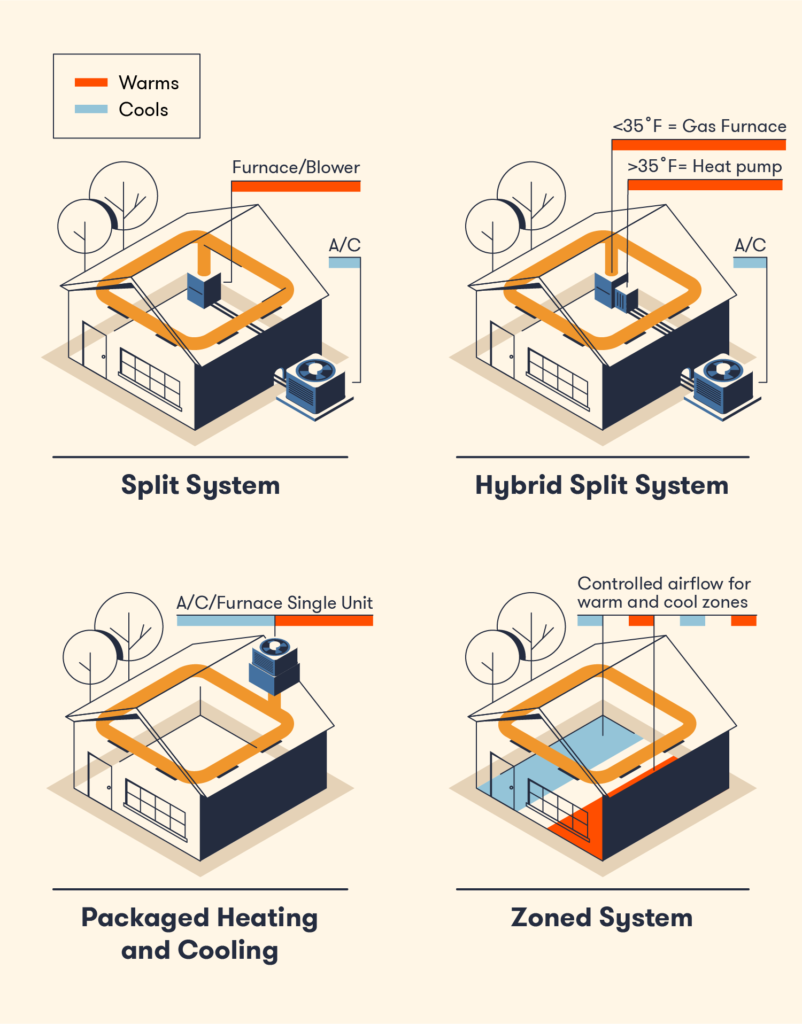
This image is property of acropolis-wp-content-uploads.s3.us-west-1.amazonaws.com.
Variations in Humidity
Dehumidifiers for High Humidity
In areas with high humidity levels, dehumidifiers play a vital role in maintaining indoor comfort and preventing moisture-related issues. High humidity can make your home feel sticky and uncomfortable, promote the growth of mold and mildew, and cause musty odors. Dehumidifiers remove excess moisture from the air, ensuring optimal humidity levels and improving indoor air quality. They are available in various sizes and types to suit your specific needs.
Humidifiers for Low Humidity
Low humidity can cause dry skin, irritated sinuses, and even damage to wood furniture and flooring. Humidifiers add moisture to the air, increasing humidity levels and preventing these negative effects. They are especially beneficial during the dry winter months when heating systems can further reduce indoor humidity. Humidifiers come in different designs, including portable units and whole-house systems, allowing you to choose the one that suits your requirements.
Smart Thermostats with Humidity Control
Smart thermostats with humidity control provide advanced temperature and humidity management. These thermostats monitor both indoor humidity levels and temperature, allowing you to set specific humidity targets for optimal comfort. They can adjust the operation of your HVAC system based on humidity readings, ensuring that your home remains both comfortable and free from excess moisture. Smart thermostats also offer convenient features such as remote control and integration with smart home systems.
Adjustable Ventilation Systems
Adjustable ventilation systems are designed to address variations in humidity levels. These systems allow you to control the amount of outside air entering your home, adjusting it according to humidity readings. By increasing or decreasing ventilation, you can manage humidity levels, ensuring optimal comfort and indoor air quality. Adjustable ventilation systems are particularly useful in areas where humidity levels fluctuate throughout the year.
Ventilation Solutions
Heat Recovery Ventilation (HRV)
Heat recovery ventilation (HRV) systems provide continuous fresh air while recovering heat from stale, outgoing air. In HRV systems, stale air is expelled from your home while fresh outdoor air is drawn in. Heat from the outgoing air is transferred to the incoming air, ensuring that the fresh air entering your home is pre-conditioned. HRV systems are energy-efficient, as they reduce the load on your heating and cooling systems by recuperating heat from the exhaust air.
Energy Recovery Ventilation (ERV)
Energy recovery ventilation (ERV) systems are similar to HRV systems but also recover humidity in addition to heat. In moist climates, ERV systems are particularly effective, as they transfer moisture from the incoming humid air to the drier outgoing air. This helps maintain optimal humidity levels while providing fresh, conditioned air inside your home. ERV systems are an excellent choice for areas with frequent humidity fluctuations.
Attic and Whole-House Fans
Attic and whole-house fans promote air circulation and cooling in your home. Attic fans remove hot air from your attic, reducing the heat load on your home and improving energy efficiency. Whole-house fans draw in cool air from outside and exhaust hot air, providing natural ventilation and cooling during moderate weather. These fans work best when outdoor temperatures are cooler than indoor temperatures, making them ideal for mild and moist climates.
Natural Ventilation Techniques
Natural ventilation techniques utilize natural air movement and outdoor conditions to cool and refresh your home. These techniques include opening windows strategically to allow cross-ventilation, using window coverings and shades to block direct sunlight, and utilizing design features such as skylights and operable vents to promote airflow. Natural ventilation can be highly effective in mild and moist climates, reducing the reliance on mechanical cooling systems and providing a fresh and comfortable living environment.
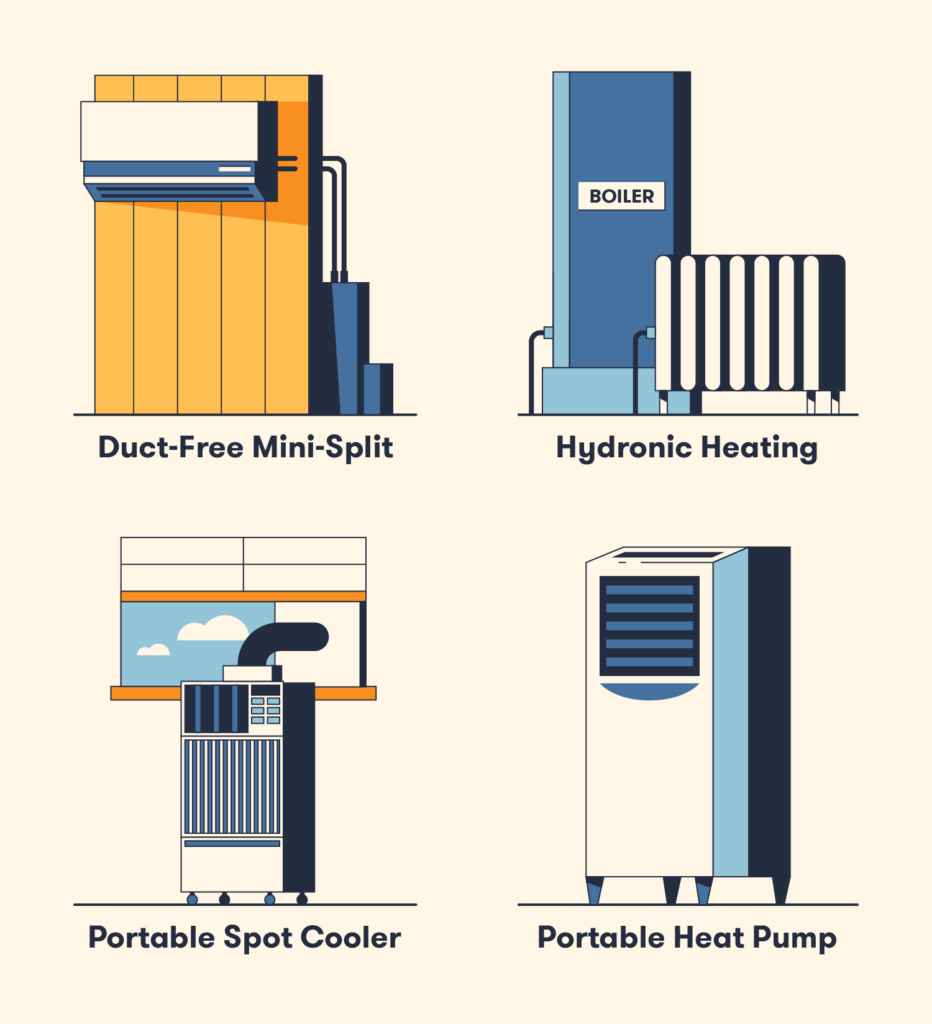
This image is property of acropolis-wp-content-uploads.s3.us-west-1.amazonaws.com.
Energy Efficiency Considerations
SEER Ratings for Air Conditioners
Seasonal Energy Efficiency Ratio (SEER) ratings indicate the energy efficiency of air conditioning systems. In general, higher SEER ratings denote more energy-efficient units. When selecting an air conditioner, look for models with high SEER ratings to maximize energy savings and minimize environmental impact. Efficient air conditioners not only provide optimal cooling but also save you money on electricity bills in the long run.
AFUE Ratings for Furnaces
The Annual Fuel Utilization Efficiency (AFUE) rating measures the efficiency of gas and oil furnaces. Furnaces with higher AFUE ratings convert a larger percentage of fuel into heat, resulting in greater energy efficiency. When choosing a furnace, opt for models with high AFUE ratings to ensure efficient heating and reduced fuel consumption. Highly efficient furnaces not only keep you warm but also help reduce your heating costs.
EER Ratings for Heat Pumps
Energy Efficiency Ratio (EER) ratings indicate the energy efficiency of heat pumps. Heat pumps with higher EER ratings provide more cooling energy per unit of electricity consumed, resulting in greater efficiency. Look for heat pumps with high EER ratings to ensure optimal cooling efficiency during hot and humid weather. Energy-efficient heat pumps not only provide excellent cooling but also contribute to lower energy bills.
HEPA Air Filters
High-efficiency particulate air (HEPA) filters are known for their superior performance in removing airborne contaminants. These filters can capture tiny particles such as dust, pollen, pet dander, mold spores, and even some bacteria and viruses. A HEPA filter in your HVAC system helps improve indoor air quality, making your home a healthier and more comfortable environment. Consider HVAC systems that include HEPA filters for effective air purification and allergen control.
Renewable Energy Options
Solar-Powered HVAC Systems
Solar-powered HVAC systems utilize the sun’s energy to generate electricity and power your heating and cooling systems. These systems consist of photovoltaic panels installed on your roof or property that convert sunlight into electricity. Solar power can help reduce your energy consumption and reliance on the grid, resulting in lower utility bills and a reduced carbon footprint. Solar-powered HVAC systems are an excellent choice for those looking to embrace renewable energy and maximize energy savings.
Wind-Powered HVAC Systems
Wind-powered HVAC systems harness the power of wind to generate electricity for your heating and cooling needs. Wind turbines, either mounted on your property or located in wind farms, convert kinetic energy from the wind into electrical energy. Wind power is a clean and renewable energy source that can provide significant energy savings and reduce dependence on fossil fuels. Wind-powered HVAC systems are ideal for areas with consistent and reliable wind resources.
Geothermal Heating and Cooling
Geothermal heating and cooling systems utilize the stable temperature of the earth to provide efficient and environmentally friendly HVAC solutions. These systems extract heat from the ground during winter and transfer heat back to the ground during summer, using geothermal heat pumps. Geothermal systems are highly energy-efficient, as they rely on renewable energy stored in the earth. They can significantly reduce your heating and cooling costs while minimizing your carbon footprint.
Passive Cooling Techniques
Passive cooling techniques harness natural elements and design features to cool your home without relying on mechanical systems. This approach takes advantage of shading, insulation, strategic window placement, and natural ventilation to reduce heat gain and maintain a comfortable indoor temperature. Passive cooling techniques can include features such as reflective roofing, shaded outdoor spaces, and insulated walls and windows. These techniques are particularly effective in moderate climates and can help decrease your reliance on energy-consuming HVAC systems.
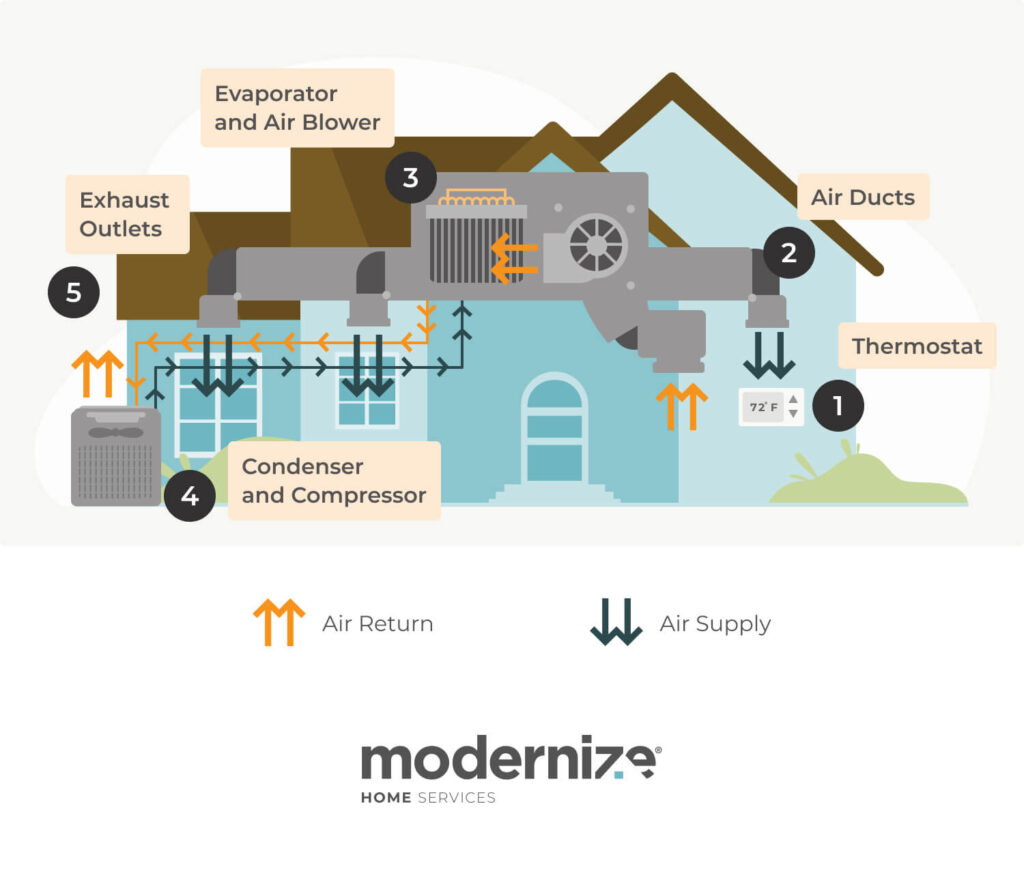
This image is property of modernize.com.
Smart Home Integration
Programmable Thermostats
Programmable thermostats are a staple of smart home integration, allowing you to control and schedule your HVAC system conveniently. These thermostats enable you to set temperature presets based on your daily routine and preferences. They can automatically adjust the temperature when you’re away from home, optimizing energy usage and increasing overall efficiency. Programmable thermostats can also be controlled remotely through smartphone apps or integrated with voice assistant devices.
Voice-Enabled HVAC Controls
Voice-enabled HVAC controls add an extra level of convenience to your smart home. By integrating with voice assistant devices such as Amazon Alexa or Google Assistant, you can control your HVAC system with simple voice commands. Adjusting the temperature, turning the system on/off, or changing settings becomes effortless and hands-free. Voice-enabled HVAC controls enhance the user experience and make managing your home’s climate more intuitive.
Wi-Fi-Connected Systems
Wi-Fi-connected HVAC systems provide remote access and control of your heating and cooling systems through mobile apps or web interfaces. With a Wi-Fi-connected system, you can monitor and adjust temperature settings, change operating modes, receive maintenance alerts, and track energy consumption from anywhere. These systems offer convenience, flexibility, and the ability to optimize energy usage based on your specific needs and preferences.
Smart Zoning Technology
Smart zoning technology allows you to divide your home into different zones and control the temperature independently in each zone. By utilizing sensors and smart thermostats, smart zoning systems adjust the airflow and temperature settings to meet the specific requirements of each zone. This technology enables you to optimize comfort and energy efficiency by directing conditioned air only to the areas that need it, rather than heating or cooling the entire house uniformly.
Maintenance and Regular Servicing
Cleaning and Replacing Air Filters
Regular cleaning and replacement of air filters are essential to maintain the performance and efficiency of your HVAC system. Clogged or dirty filters can restrict airflow, reduce system efficiency, and negatively impact indoor air quality. Follow the manufacturer’s recommendations for cleaning or replacing air filters, which can vary depending on the type of filter and usage conditions. Clean filters contribute to better airflow, ensure cleaner indoor air, and extend the lifespan of your HVAC equipment.
Duct Cleaning
Over time, dust, dirt, and other contaminants can accumulate in your HVAC system’s ductwork, affecting both system performance and air quality. Professional duct cleaning involves the thorough cleaning of your system’s ducts, registers, and vents to remove accumulated debris. This process improves airflow, reduces the risk of allergens and pollutants circulating in your home, and enhances the overall efficiency of your HVAC system.
Inspecting and Repairing Ductwork
Damaged or leaking ductwork can significantly reduce the efficiency and effectiveness of your HVAC system. Inspecting and repairing any issues with your ductwork is crucial to ensure optimal airflow and minimize energy waste. Professional HVAC technicians can identify and repair leaks, gaps, and other ductwork problems, improving system performance, and maximizing energy savings.
Regular HVAC Check-ups
Scheduling regular check-ups and maintenance for your HVAC system is an important part of ensuring its longevity and efficiency. Professional HVAC technicians can inspect, clean, and tune your system, identifying any potential issues and making necessary adjustments or repairs. Regular maintenance helps prevent breakdowns, improves energy efficiency, and enhances overall system performance. Consider scheduling annual or bi-annual HVAC check-ups to keep your system in top shape.
In conclusion, the best HVAC solutions for different climates depend on the specific needs and conditions of each region. By choosing the right equipment, maintaining regular servicing, and considering energy-efficient and renewable options, you can create a comfortable and sustainable indoor environment. Whether you live in a hot and humid climate, a cold and dry climate, a mild and moist climate, or an extreme climate, there are HVAC solutions available to meet your specific requirements. Remember to consult with HVAC professionals and experts, such as Tempacure Heating and Air Conditioning, for personalized recommendations and assistance in selecting and maintaining your HVAC system.
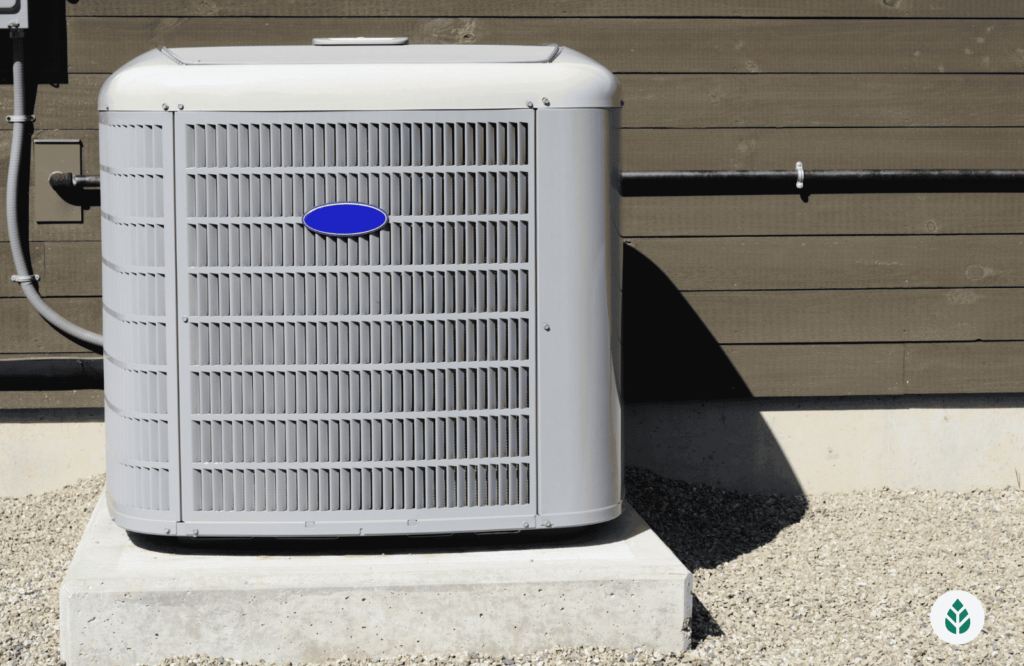
This image is property of www.ecowatch.com.


